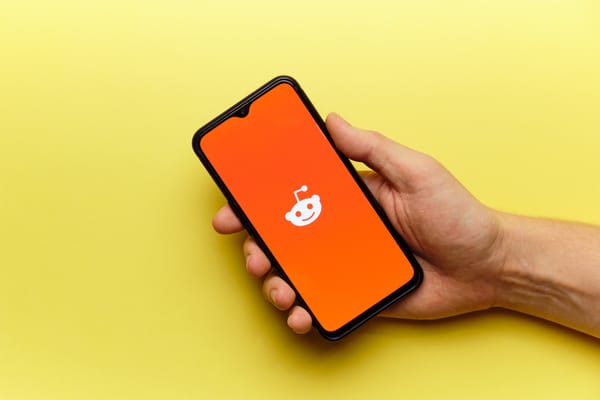The synthetic social network is coming
Between ChatGPT’s surprisingly human voice and Meta’s AI characters, our feeds may be about to change forever
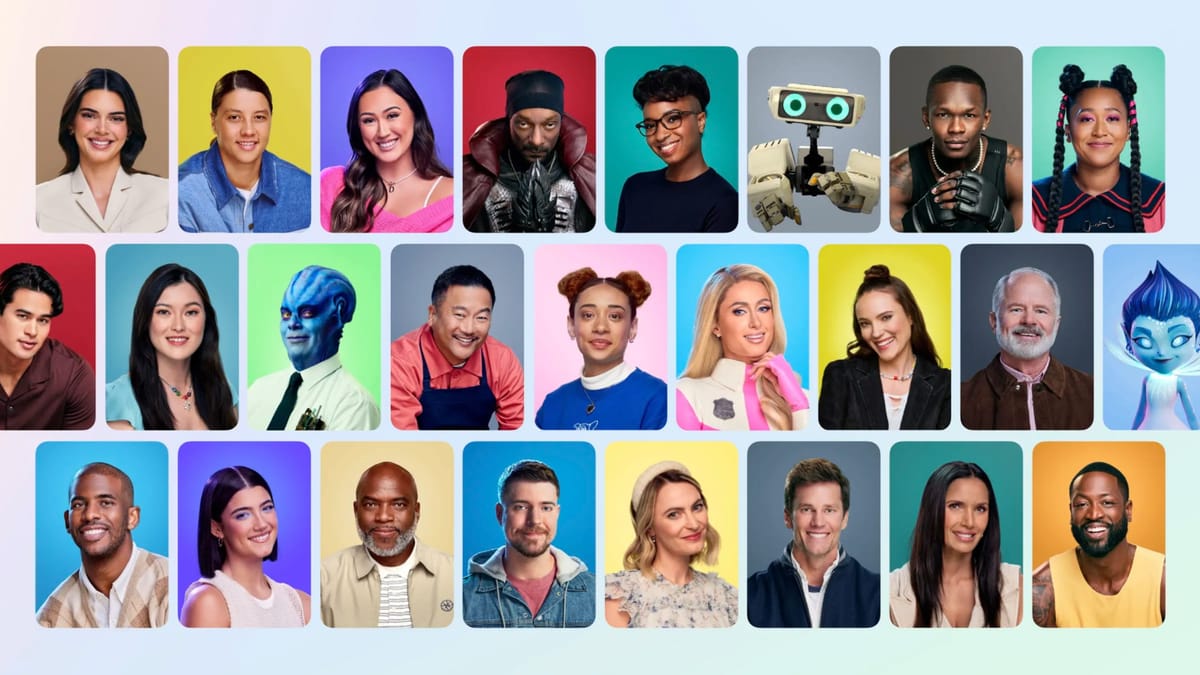
Today, let’s consider the implications of a truly profound week in the development of artificial intelligence, and discuss whether we may be witnessing the rise of a new era in the consumer internet.
I.
On Monday, OpenAI announced the latest updates for ChatGPT. One feature lets you interact with its large language model via voice. Another lets you upload images and ask questions about them. The result is that a tool which was already useful for lots of things suddenly became useful for much more. For one thing, ChatGPT feels even more powerful as a mobile app: you can now chat with it while walking around town, or snap a picture of a tree and ask the app what you’re looking at.
For another, though, adding a voice to ChatGPT begins to give it a hint of personality. I don’t want to overstate the case here — the app typically generates dry, sterile text unadorned by any hint of style. But something changes when you begin speaking with the app in one of its five native voices, which are much livelier and more dynamic than what we are used to with Alexa or the Google assistant. The voices are earnest, upbeat, and — by nature of the fact that they are powered by an LLM — tireless.
It is the earliest stage of all this; access to the voice feature is just rolling out to ChatGPT Plus subscribers, and free users won’t be able to us it for some time. And yet even in this 1.0 release, you can see the clear outlines of the sort of thing popularized in the decade-old film Her: a companion so warm, empathetic and helpful that in time its users fall in love with it. The Her comparisons are by now cliche when discussing AI in Silicon Valley, and yet until now its basic premise has felt like a distant sci-fi dream. On Thursday I asked the speaking version of ChatGPT to give me a pep talk to hit my deadline — I was running back from the Code Conference and already behind schedule — and as the model did its best to gas me up, it seemed to me that AI had taken an emotional step forward.
You can imagine the next steps here. A bot that gets to know your quirks; remembers your life history; offers you coaching or tutoring or therapy; entertains you in whichever way you prefer. A synthetic companion not unlike the real people you encounter during the day, only smarter, more patient, more empathetic, more available.
Those of us who are blessed to have many close friends and family members in our life may look down on tools like this, experiencing what they offer as a cloying simulacrum of the human experience. But I imagine it might feel different for those who are lonely, isolated, or on the margins. On an early episode of Hard Fork, a trans teenager sent in a voice memo to tell us about using ChatGPT to get daily affirmations about identity issues. The power of giving what were then text messages a warm and kindly voice, I think, should not be underestimated.
II.
OpenAI tends to present its products as productivity tools: simple utilities for getting things done. Meta, on the other hand, is in the entertainment business. But it, too, is building LLMs, and on Wednesday the company revealed that it has found its own uses for generative AI and voices.
In addition to an all-purpose AI assistant, the company unveiled 28 personality-driven chatbots to be used in Meta’s messaging apps. Celebrities including Charli D’Amelio, Dwyane Wade, Kendall Jenner, MrBeast, Snoop Dogg, Tom Brady, and Paris Hilton lent their voices to their effort. Each of their characters comes with a brief and often cringeworthy description; MrBeast’s Zach is billed as “the big brother who will roast you — because he cares.”
All of this feels like an intermediate step to me. To the extent that there is a market of people who want to have voice chats with a synthetic version of MrBeast, the character they want to interact with is MrBeast — not big brother Zach. I haven’t been able to chat with any of these character bots yet, but I struggle to understand how they will have more than passing novelty value.
At the same time, this technology is new enough that I imagine celebrities aren’t yet willing to entrust their entire personas to Meta for safekeeping. Better to give people a taste of what it’s like to talk to AI Snoop Dogg and iron out any kinks before delivering the man himself. And when that happens, the potential seems very real. How many hours would fans spend talking to a digital version of Taylor Swift this year, if they could? How much would they pay for the privilege?
While we wait to learn the answers, a new chapter of social networking may be beginning. Until now when we have talked about AI in consumer apps it has mostly had to do with ranking: using machine-learning tools to create more engaging and personalized feeds for billions of users.
This week we got at least two new ways to think about AI in social feeds. One is AI-generated imagery, in the form of the new stickers coming to the Meta’s messaging apps. It’s unclear to me how much time people want to spend creating custom images while they text their friends, but the demonstrations seemed nice enough.
More significantly, I think, is the idea that Meta plans to place its AI characters on every major surface of its products. They have Facebook pages and Instagram accounts; you will message them in the same inbox that you message your friends and family. Soon, I imagine they will be making Reels.
And when that happens, feeds that were once defined by the connections they enabled between human beings will have become something else: a partially synthetic social network.
Will it feel more personalized, engaging, and entertaining? Or will it feel uncanny, hollow, and junky? Surely there will be a range of views on this. But either way, I think, something new is coming into focus.
Code Conference
I had a memorable week in Southern California this weekend during the Code Conference, and I’m grateful to Vox Media for giving me the chance to co-host the event with my friends Nilay Patel of The Verge and CNBC’s Julia Boorstin. I got to have two great conversations on stage: one with Artifact co-founder Mike Krieger, who broke the news that the AI news reading app will now let users post words and pictures without links; and one with AI safety researchers Ajeya Cotra and Helen Toner, the latter of whom sits on the board of OpenAI. When those sessions are made available on YouTube, I’ll be sure to link them here.
At the risk of disappointing anyone who came here today looking for a column on Julia’s interview with X CEO Linda Yaccarino, I don’t have much to say on the subject that hasn’t already been said. Yaccarino fended off most of Julia’s excellent questions with GPT-2-level responses, punctuating her answers with dutiful praise for Elon Musk and the “velocity of change” he brings to the company. I’m grateful Yaccarino took a turn in the hot seat, but in the end she had little to offer — just some numbers that will never be audited, and explanations that don’t add up.
You can watch Yaccarino’s appearance here.

On the podcast this week: Kevin and I catch up on a huge week of AI news. Then, I talk about my experience with the Meta Quest 3. And finally, notorious prompt engineer Riley Goodside joins us to talk about what it’s like to have one of the weirdest jobs in tech today.
Apple | Spotify | Stitcher | Amazon | Google
Governing
- The Google antitrust trial isn’t just one of the biggest antitrust cases of the decade — it’s also one of the most secretive. Other big tech companies like Apple and Microsoft are joining Google to limit public access to the trial. (Nico Grant, Cecilia Kang and Tripp Mickle / The New York Times)
- The judge said documents used during the trial can be published online at the end of each day. (Sabrina Willmer, Emily Birnbaum and Leah Nylen / Bloomberg)
- Apple’s Eddy Cue is defending its Google search deal in court, saying that there certainly “wasn’t a valid alternative to Google at the time”, and there still isn’t one. Has he tried ChatGPT? (David Pierce / The Verge)
- Microsoft’s Mikhail Parakhin testified that the company has been trying to convince Apple to switch the iPhone search engine to Bing for years, but with no success. (Leah Nylen / Bloomberg)
- The DOJ alleges that Google intentionally deleted employee chats, saying that the “sheer volume of destroyed documents is remarkable”. But a judge has yet to decide whether to sanction the company over it. (Alex Pasternack / Fast Company)
- Google user data is increasingly being used by police in warrants, including location and search data even for nonviolent crimes and non suspects, raising questions about data privacy and constitutionality. (Julia Love and Davey Alba / Bloomberg)
- The FTC and 17 states sued Amazon earlier this week, alleging that the company holds a monopoly over online retail, artificially inflating prices and restricts sellers’ choices. (Dave Michaels and Dana Mattioli / The Wall Street Journal)
- The FTC’s Lina Khan has long been one of Amazon’s greatest critics, and now her expansive case against the company could force changes in the business. Assuming she can convince a judge, of course. (Stefania Palma / The Financial Times)
- The FTC is bringing back its challenge against the Microsoft-Activision deal, moving forward with an in-house trial. (Emily Birnbaum / Bloomberg)
- Net neutrality is coming back, the FCC says. Broadband providers will have to treat all traffic equally regardless of deals and partnerships if the rule is reinstated. (Devin Coldewey / TechCrunch)
- Epic Games, the maker of Fortnite, is challenging a 2021 ruling that Apple’s App Store doesn’t violate federal antitrust laws in the US Supreme Court. (Malathi Nayak / Bloomberg)
- An audit by the US government found that only 5% of FBI agents who have access to facial recognition technology provided by third-party companies like Clearview AI are properly trained to conduct searches. (Khari Johnson / WIRED)
- The CIA is developing its own AI chatbot to help “find the needles in the needle field,” and is planning a rollout to other US intelligence agencies. (Peter Martin and Katrina Manson / Bloomberg)
- About 60,000 emails were reportedly stolen from 10 US State Department accounts by Chinese hackers, according to department IT officials. (Raphael Satter and Zeba Siddiqui / Reuters)
- The EU found that X had the highest ratio of disinformation out of all large social media platforms, and issued a warning to Elon Musk to comply with new laws regarding fake news and Russian propaganda. (Lisa O’Carroll / The Guardian)
- X is cutting half of its team dedicated to limiting misinformation and election fraud, including its head, despite a promise that the company would expand it after facing criticism from the EU. (Erin Woo / The Information)
- X has also disabled a feature that let users report misinformation relating to elections, removing it everywhere except in the EU. (Byron Kaye / Reuters)
- Facebook reportedly let pressure from the Indian government stave its removal of violent content on its platform, shying away from punishing Prime Minister Narendra Modi’s Bharatiya Janata Party and affiliated accounts. (Joseph Menn and Gerry Shih / The Washington Post)
- TikTok’s e-commerce ambitions are facing obstacles in Indonesia, after minister Teten Masduki accused the tech giant of crushing local players and introduced regulations that will force TikTok to split payments from shopping. (Faris Mokhtar and Olivia Poh / Bloomberg)
- When asked about how social media makes them feel, 65 teens were divided — social media connected them to the rest of the world, but could be an outlet for bullying and comparison. But being able to set boundaries has helped. (Anya Kamenetz / The Cut)
Industry
- Meta unveiled its Quest 3 headset at its Connect conference, priced at $500, a $200 jump from Quest 2, shifting from VR to mixed reality. (Mark Gurman / Bloomberg)
- The new headset has higher resolution and an improved processor, but still doesn’t offer much to do in mixed reality. (Adi Robertson / The Verge)
- Meta Quest for Business is coming next month, and will be compatible with different enterprise applications, Meta says. (Brian Heater / TechCrunch)
- Users who already have Quest headsets can now play Roblox in VR, which will also work in the new Quest 3. (Aisha Malik / TechCrunch)
- Xbox Cloud Gaming will also be available in mixed reality for the Quest 3. (Eddie Makuch / GameSpot)
- Meta also announced a suit of AI tools for content creators at the conference, mirroring YouTube’s announcement last week. (Mia Sato / The Verge)
- The new Ray-Ban Meta Smart Glasses have two primary purposes — replacing your headphones with a personal audio system, and taking photos with cameras on each side. I enjoyed the demo I got of them.(David Pierce / The Verge)
- Mark Zuckerberg says the company is now focused on developing innovative products, including developments in Threads and AI. An unusually relaxed and highly product-focused interview with Zuckerberg. (Alex Heath and Nilay Patel / The Verge)
- Meta’s Alexis Black Bjorlin, who led the company’s efforts to develop its own AI chips, is reportedly leaving at the end of the month. (Katie Paul and Stephen Nellis / Reuters)
- Linda Yaccarino sits down for one of her first interviews to mark 100 days as X’s CEO. (Hannah Murphy / The Financial Times)
- A string of high-level executive moves from ByteDance to TikTok, some from Beijing to the US, is raising red flags to employees, prompting concern over the China parent’s influence. (Georgia Wells / The Wall Street Journal)
- OpenAI is reportedly pitching a share sale to investors that would value the company between $80-$90 billion, tripling its valuation from earlier this year. (Deepa Seetharaman and Berber Jin / The Wall Street Journal)
- OpenAI is also reportedly in talks with Softbank and former Apple designer Jony Ive to create the “iPhone of artificial intelligence”, backed by over $1 billion from the venture capital firm. (Matthew Garrahan, Tim Bradshaw, Madhumita Murgia and Kana Inagaki / The Financial Times)
- Internet browsing is now available for ChatGPT Plus and Enterprise users, expanding the data it can access. (Reuters)
- Panos Panay is officially replacing Amazon’s Dave Limp in the hardware division, after working at Microsoft for almost 20 years, most recently as its product lead. (Emma Roth / The Verge)
- Amazon announced that Bedrock, its generative AI service for AWS customers, is now generally available. (Kyle Wiggers / TechCrunch)
- Google patched a zero-day vulnerability in Chrome after an exploit by a commercial spyware vendor. (Carly Page / TechCrunch)
- Google is now allowing teenagers aged 13-17 access to its generative AI search experience, noting that it has guardrails prohibiting harmful or inappropriate content. (Aisha Malik / TechCrunch)
- Website publishers can now opt out of having their data used for Google’s AI training purposes while still remaining visible through Search. Now that Google doesn’t need the data any more! (Emma Roth / The Verge)
- Hollywood studios can train AI models based on writers’ work, but only with credit and compensation to the writers, under a tentative deal with the Writers Guild of America. (Jessica Toonkel and Joe Flint / The Wall Street Journal)
- Medium is changing its default policy on letting its text be scraped for AI training to no, and it’s not planning on changing it until AI companies address credit, compensation and consent issues. (Tony Stubblebine / The Medium Blog)
- Snap is shutting down its unit that worked on augmented reality services for businesses after just announcing its creation in March. (Alex Barinka / Bloomberg)
- Reddit is removing a feature that let users opt out of ad personalization based on activity. (Ivan Mehta / TechCrunch)
- Epic Games, amidst its legal challenges, is laying off 15% of its staff in an effort to cut costs. (Jason Schreier / Bloomberg)
Those good posts
For more good posts every day, follow Casey’s Instagram stories.
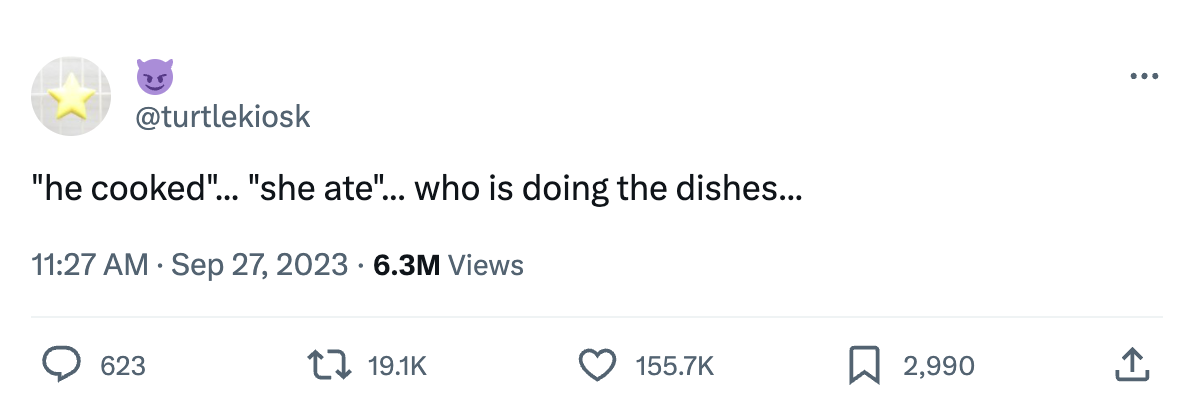
(Link)
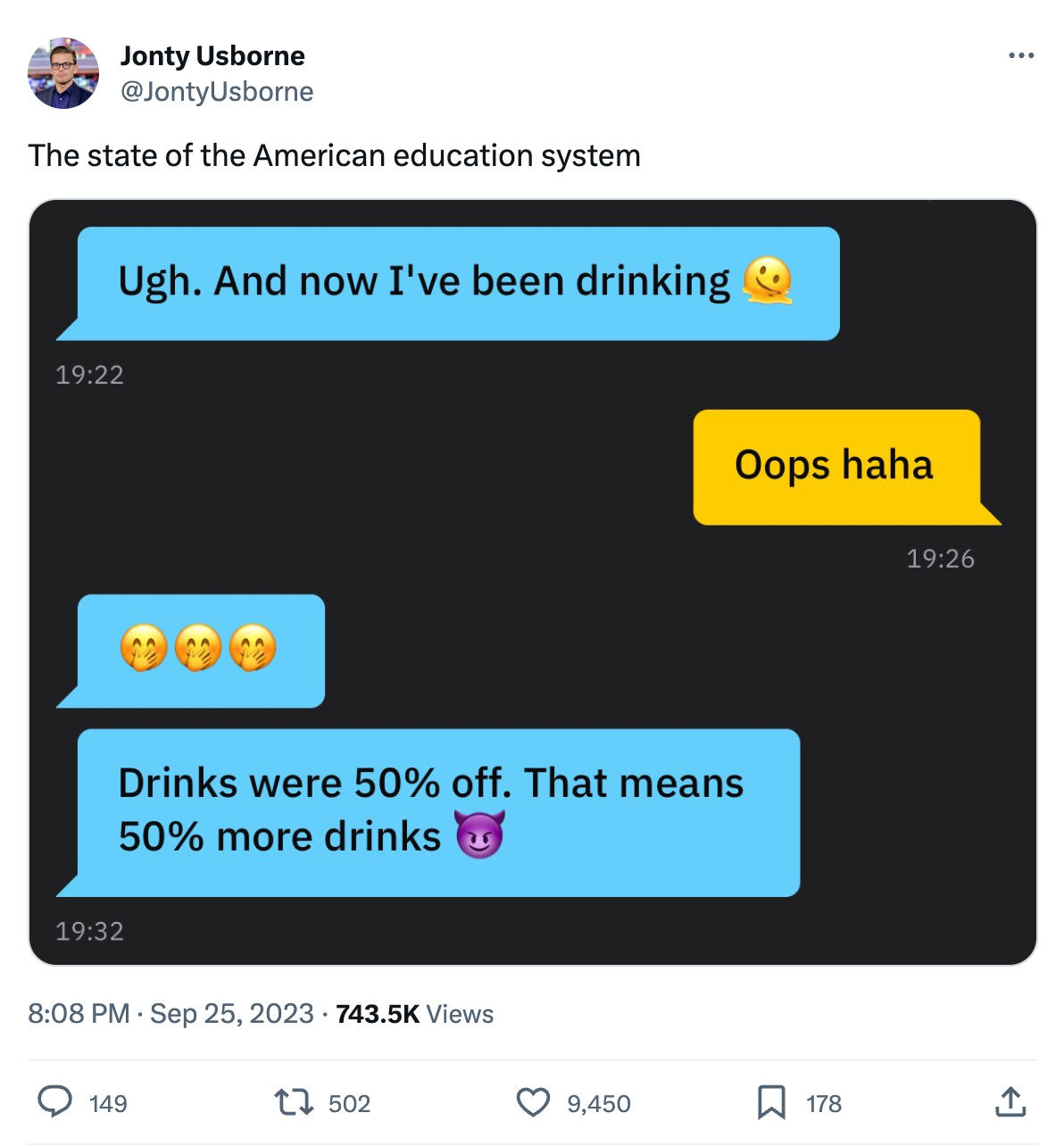
(Link)
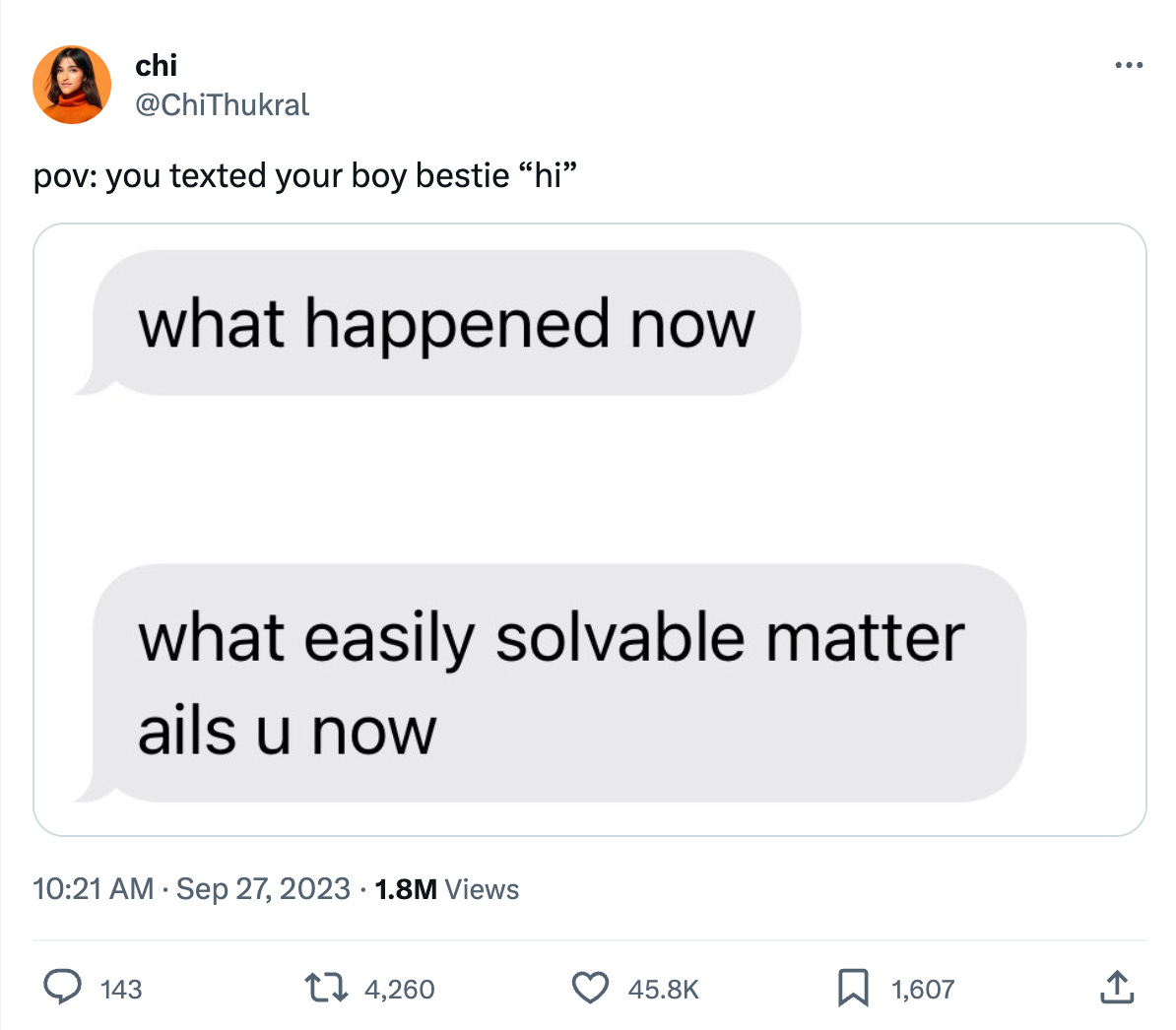
(Link)
Talk to us
Send us tips, comments, questions, and synthetic social posts: casey@platformer.news and zoe@platformer.news.



